Mad Hedge Technology Letter
April 1, 2024
Fiat Lux
Featured Trade:
(THE STREAMING WARS WIND DOWN)
(NFLX, (PARA), (WBD)

Mad Hedge Technology Letter
April 1, 2024
Fiat Lux
Featured Trade:
(THE STREAMING WARS WIND DOWN)
(NFLX, (PARA), (WBD)

For certain segments of the technology sector, it sure does feel like they are fully saturated.
I am not referring to AI, because that is in the early innings of a seismic movement.
However, let’s take a look at streaming.
This category was invented by Netflix (NFLX) and now the whole country pays for streaming.
Netflix had the first-mover advantage and took the initiative.
For the leftovers, the pain and struggle with creating a profitable streaming business is real.
Is the year 2024 the year when streaming management has that Aha moment?
Many have instructed us to stay on board the ship while losses bleed uncontrollably.
Everyone is fighting to be one of the three or four streaming services people can’t live without.
Paramount Global (PARA) is under pressure to abandon its namesake streaming service, and Warner Bros. Discovery (WBD) is desperate for partners that offer Max a better chance to compete with the likes of Netflix.
Let’s look at Disney right now.
Streaming grew quickly from launch in 2019 — we’re talking now about Disney+, ESPN+, and Hulu — but even with strong sales, they are sitting on big losses.
Disney board member Nelson Peltz is unhappy, as outlined in a 133-page manifesto published March 4, that Disney “belatedly” entered the streaming game and has a “poorly planned" strategy to catch up with the likes of Netflix.
He takes issue with Disney trying to achieve scale in streaming by buying Fox’s entertainment assets for $71 billion in 2019 because he thinks it exposed the company more to the dying linear TV business.
He also can’t believe that a company reporting more than $22 billion of run-rate streaming revenue annually is still losing money.
Peltz wants a digital strategy for the ESPN sports assets..
Peltz wants a succession plan put in place for current CEO Bob Iger, who extended his contract with Disney last year after a coming-out-of-retirement return to the company in 2022.
In February, Disney teamed up with Fox and Warner Bros. Discovery to create a streaming service for college and pro sports that you can currently only find on TV.
That seems like what Peltz was asking for. Disney also invested $1.5 billion in Epic Games and gave access to the Fortnite maker for gaming portrayals of Star Wars, Marvel, and Avatar.
The bottom line here is that streaming is not nearly as profitable as many insiders first thought.
Streamers thought they could scale up and acquire subscribers at a loss and then raise prices.
That business model was only for Netflix to accomplish because they started so much earlier than anyone else.
The best of the rest are now saddled with loss-making companies and the cost of content post-covid has never been pricier.
Netflix shares have had a nice run in the last 365 days going from $180 per share to over $600 per share.
A lot of that price movement was an acknowledgement that they are dominating streaming compared to the other legacy corporations that have tried their hand in this game.
Instead of jumping into the legacy TV players turned streamers, I would tell readers to wait for Netflix on the dip.
It’s been tried and tested over time and any big dip should and will be bought by investors.
There is not a lot of room for stocks other than Netflix in a sub-sector of rather scarce any AI.
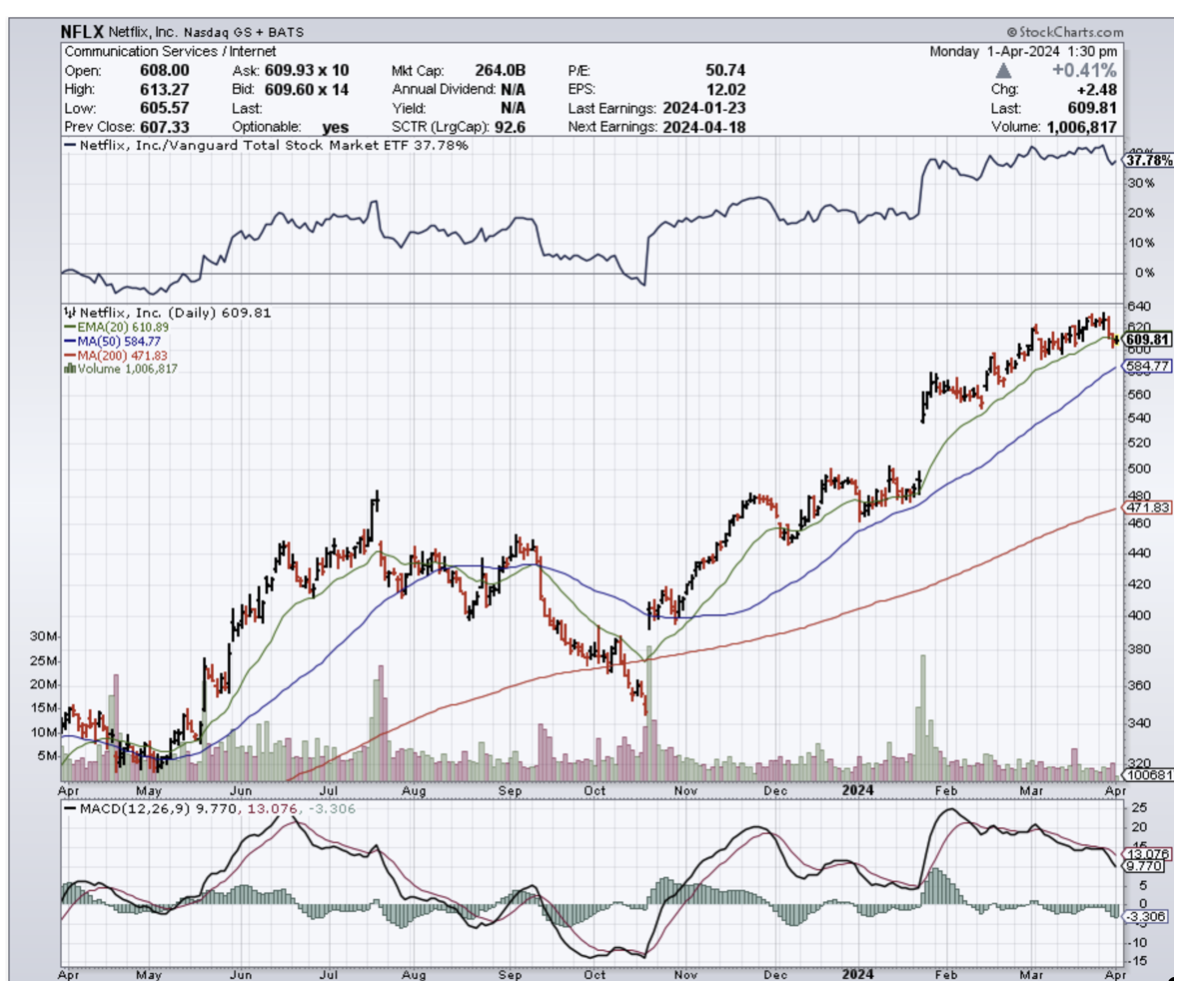
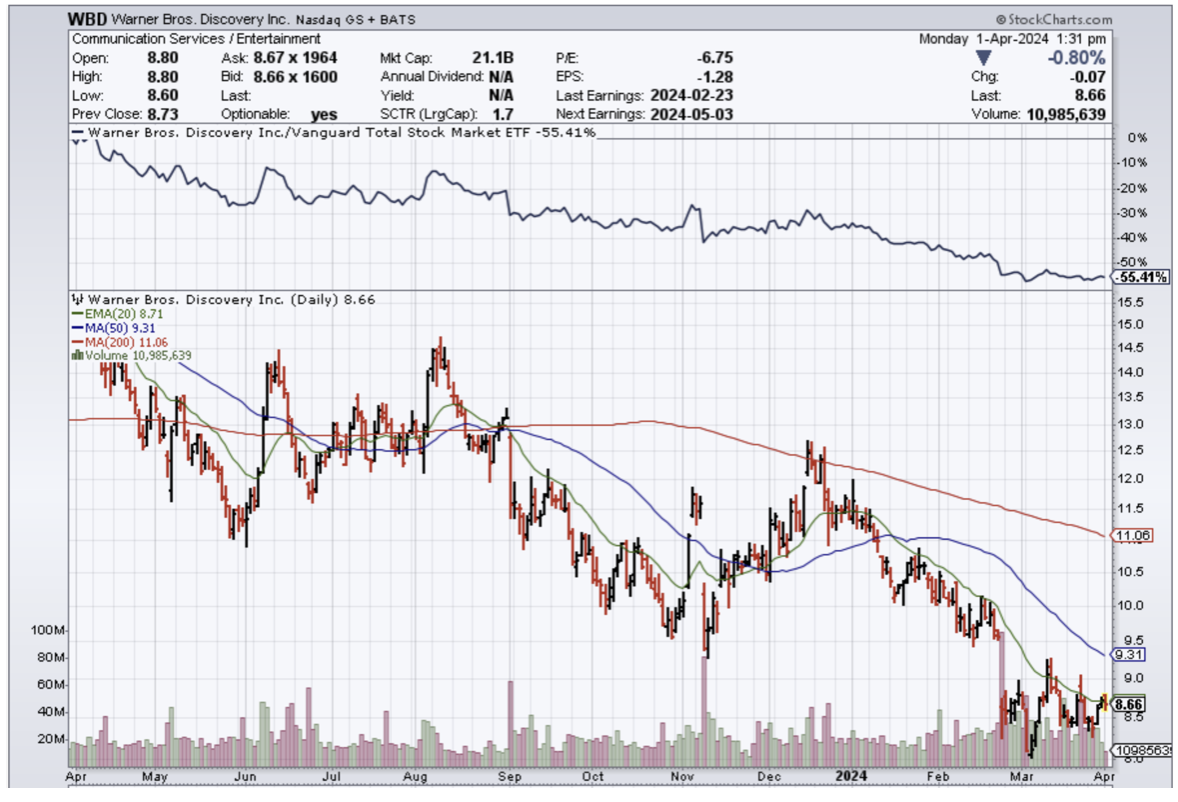
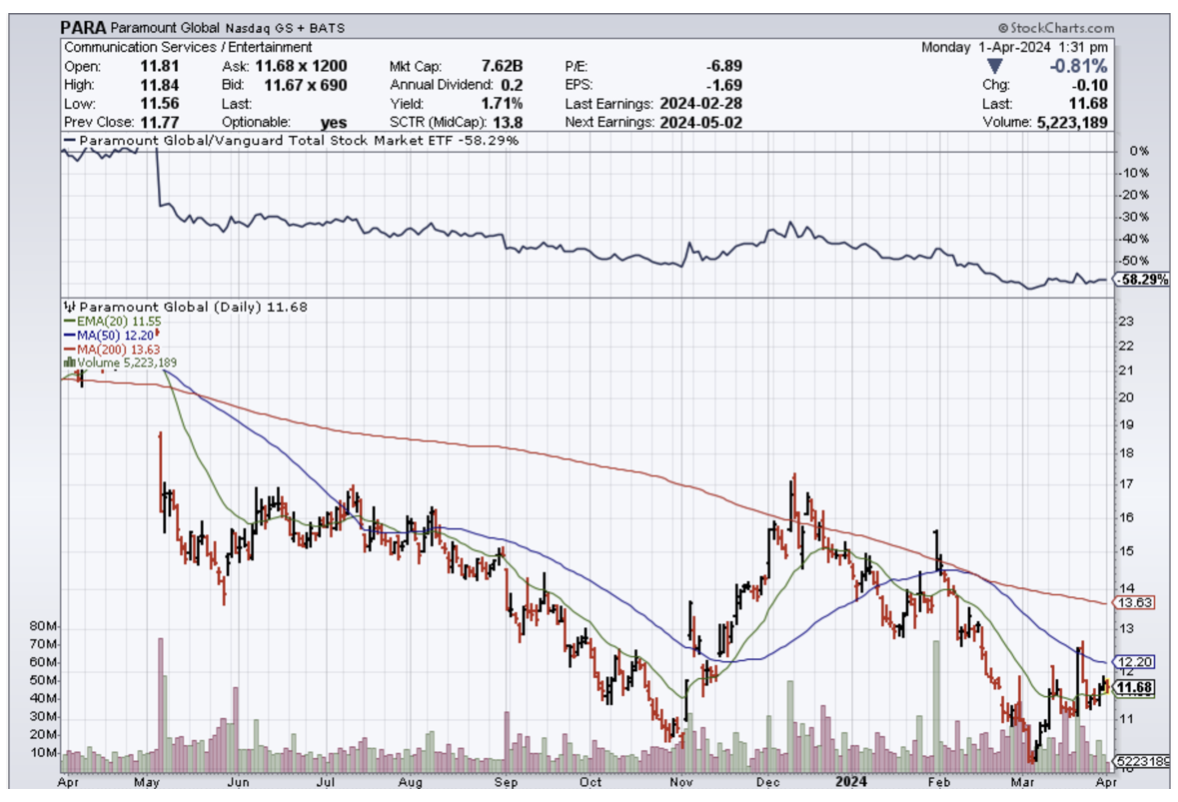
Mad Hedge Technology Letter
March 15, 2023
Fiat Lux
Featured Trade:
(THE UNKNOWN IN THE DIGITAL AD SPACE)
(NFLX), (WBD), (DIS), (CMCSA), (ROKU)

The uncertain digital advertising environment has been a thorn in the side of legacy media giants for quite some time.
Companies from Comcast (CMCSA) to Warner Bros. Discovery (WBD) are feeling the pressure as profitability struggles pile up.
Unfavorable macroeconomic headwinds coupled with decreased ad budgets amid a decline in linear TV and digital search trends put the ad market through the wringer in 2022.
Recent ad market softness comes as media giants like Disney (DIS) and Netflix (NFLX) have embraced ad-supported streaming alternatives as the race for eyeballs escalate.
Disney's direct-to-consumer division lost an eye-popping $4 billion-plus in 2022.
Warner Bros Discovery is now targeting $4 billion in cost savings over the next two years.
Advertising revenue within NBCUniversal's media division increased by 4% in Q4 because of a boost from the incremental revenue from the FIFA World Cup.
Looking ahead, the lack of brand name events in 2023 such as the World Cup, Olympics, or U.S. midterm elections, will likely be a drag on ad spend in 2023.
Those events greatly aided the battered industry with the domestic ad market totaling $318 billion last year — an increase of 8% compared to 2021.
Similarly, Spotify (SPOT) CFO Paul Vogel told investors during the latest earnings call: "Advertising in Q4, overall, it's definitely continued to be very up and down."
Spotify's Q4 ad-supported revenue, boosted by podcasting, grew 14% on a year-over-year basis to €449 million — accounting for 14% of total revenue.
Disney and Netflix rolled out their ad tier products at a time when the ad market is in flux, but the move seems to have been a lucrative one.
At the time of the debut, the company said over 100 advertisers bought inventory for the launch — bucking the trend of a global ad spend slowdown.
Similar to Disney, Netflix is playing the long game when it comes to its recently launched ad-supported tier, which officially debuted in November.
In its latest shareholder letter, Netflix said engagement for ad-supported subscribers "is consistent with members on comparable ad-free plans, is better than what we had expected, and we believe the lower price point is driving incremental membership growth."
Investors should run to higher grounds to avoid the upcoming slaughter in legacy media.
The cord cutter phenomenon is real and the pivot to work-from-home culture has really stuck the fork in many traditional services that used to be part of American culture.
Legacy media is one of the big losers – nobody watches analog television anymore.
Investors will need to seek attractive properties such as NFLX to buy the dip.
They benefit from the first mover advantage, but Disney is also finding their way after firing former CEO Bob Chapek and replacing him with the guy before him - Bob Iger. It’s not a pure streaming play which is also an issue for the likes of Amazon and I do think Roku is a little too growth based at this point in the business cycle.
The overall message is to avoid unproven tech assets for the time being with bank turmoil and interest rate tumult.
The only exceptions are active traders who use volatility in their favor and play from the long and short side. Traders usually don’t discriminate and can jump in and out of these sharp movements.
If traders want to get into streaming or social media stocks, that is fine, but stick with the brand names and shun the exotic names for now.
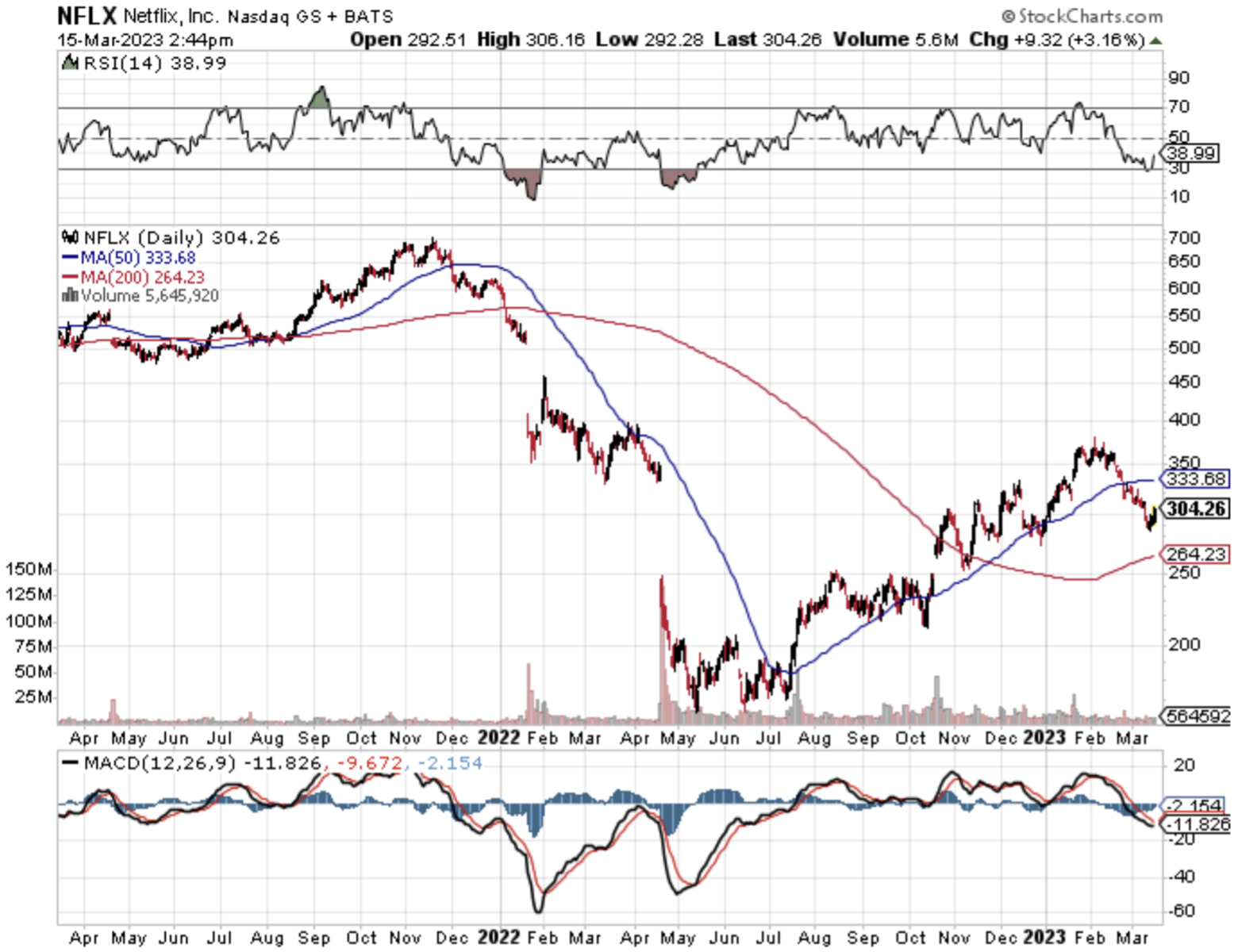

Mad Hedge Technology Letter
April 20, 2022
Fiat Lux
Featured Trade:
(PEAK EYEBALLS)
(DIS), (CURI), (ROKU), (PTON), (ZM), (WBD), (FUBO), (NFLX)

Online streamers now have no pricing power.
Remove jacking up prices from the equation and streamers like Netflix (NFLX) and Disney (DIS) look quite mediocre and that’s what the 35% drop in NFLX shares are telling us.
NFLX Ahh factor has vanished.
It used to be that they knew they could raise prices whenever they wanted and that tool in their kit kept investors on board.
CNN+’s dismal foray into pay tv was another red flag when owner Warner Bros. Discovery (WBD) decided to pull all marketing spend because of the paltry viewing results.
There’s just too much competition out there and instead of creating more leeway, growth was pulled forward the past 2 years, and now the chickens are coming home to roost.
Shelter-at-home stocks like Peloton (PTON) and Zoom (ZM) are now surplus to requirements.
It was just not that long ago, that fresh streaming TV options launched at a frenzied pace.
With many subscription services available, streaming entertainment became ubiquitous in U.S. homes as consumers spent large quantities of time and money on streaming media.
As economies reopen following the end of the health situation, and consumers spend more time outside of their homes, there still are just other things to do like going outside.
The idea that there are still many years of streaming growth lie ahead for the streaming industry has turned out to be an utter fallacy.
These are some tech companies impacted.
The much-anticipated Disney+ streaming service was launched in late 2019, just in time for the health situation.
It added tens of millions of subscribers worldwide in its first year and quickly became the second-largest subscription streaming service after Netflix. Disney also owns the streaming services Hulu and ESPN+ in the U.S. but they still don’t turn a profit on many of these streaming assets yet.
It is unlikely that new content will reverse generating excessive losses.
Better Disney stick to the amusement parks.
Streaming TV has been a boon for the smart TV and streaming device maker.
Roku has become the largest TV platform in the U.S., distributing content via The Roku Channel and acting as a hub for households to manage all of their streaming subscriptions.
Roku distributes its smart TV software and streaming devices at minimal cost, making money instead on advertising and by managing subscriptions.
With peak eyeballs on streaming, don’t expect any explosive growth from Roku, in fact, they could go with a whimper and wait for a buyout.
This is a warning sign for any tech company that chooses to not produce their own in-house content and relying on others to draft the narrative of future health is awfully dangerous in a zero sum game.
Streaming service fuboTV, a relative newcomer to the streaming media industry, went public in 2020.
This small service has gained popularity as a live TV platform, and it’s a top option for those who want to watch live sporting events.
The smaller they come, the harder they fall.
Smaller streaming companies have little recourse when multiple exogenous forces impact the company.
fuboTV is nowhere near profitability and has lost close to half a billion dollars in each of the past 2 years.
Public companies are often harangued for going ex-growth the second they are tradable in New York, and this is the epitome of what I am talking about.
The stock has gone from $35 to $5 today in the past 5 months.
Don’t catch a falling knife here.
CURI is another newbie to the dying streaming industry.
This streaming media company focuses on documentaries and science content and was founded by Discovery’s
CURI is competing against some well-entrenched rivals in the non-fiction TV space, including Discovery and Disney’s National Geographic (available on Disney+).
The young company keeps its content creation costs relatively low since it focuses on educational material and partners with universities, but who really wants to see this type of content anyway.
This company sounds boring and naïve.
CURI’s stock price has gone from $17 to $2 in the past 5 months.
Avoid like the plague!
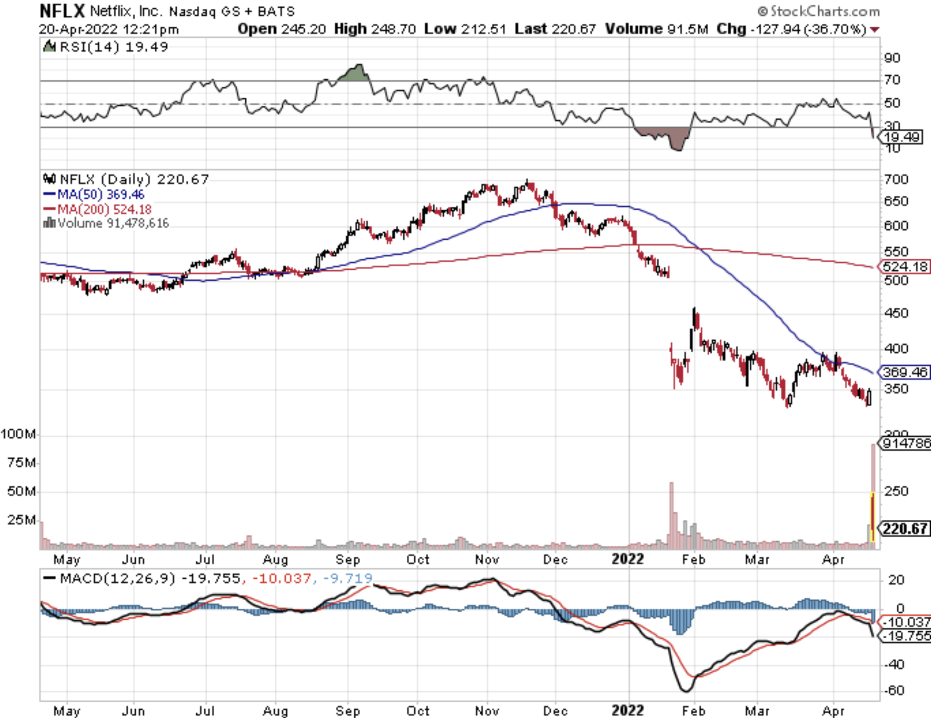
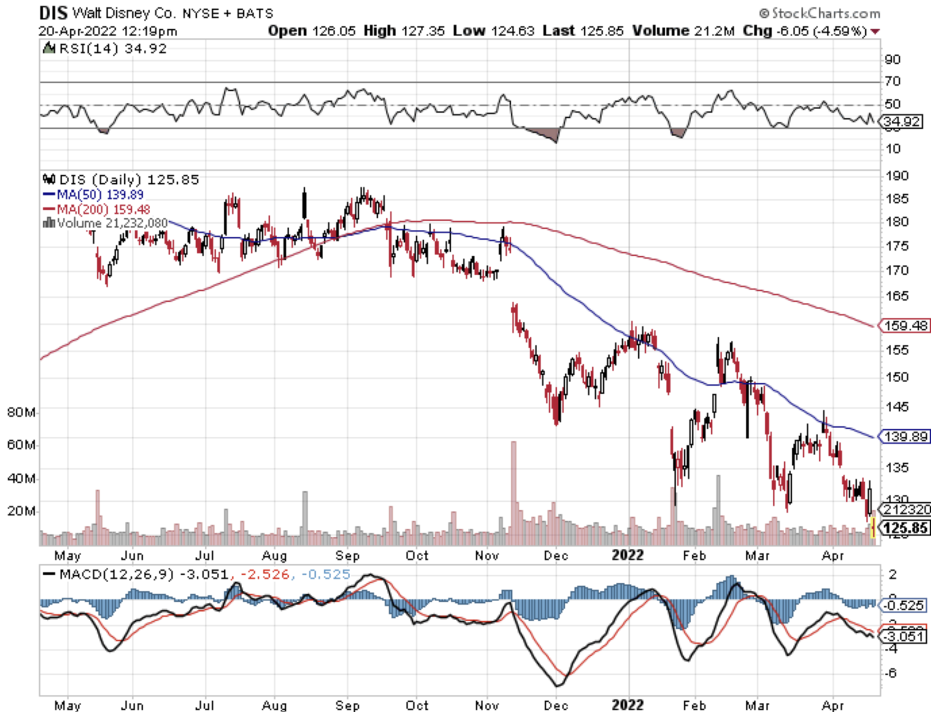
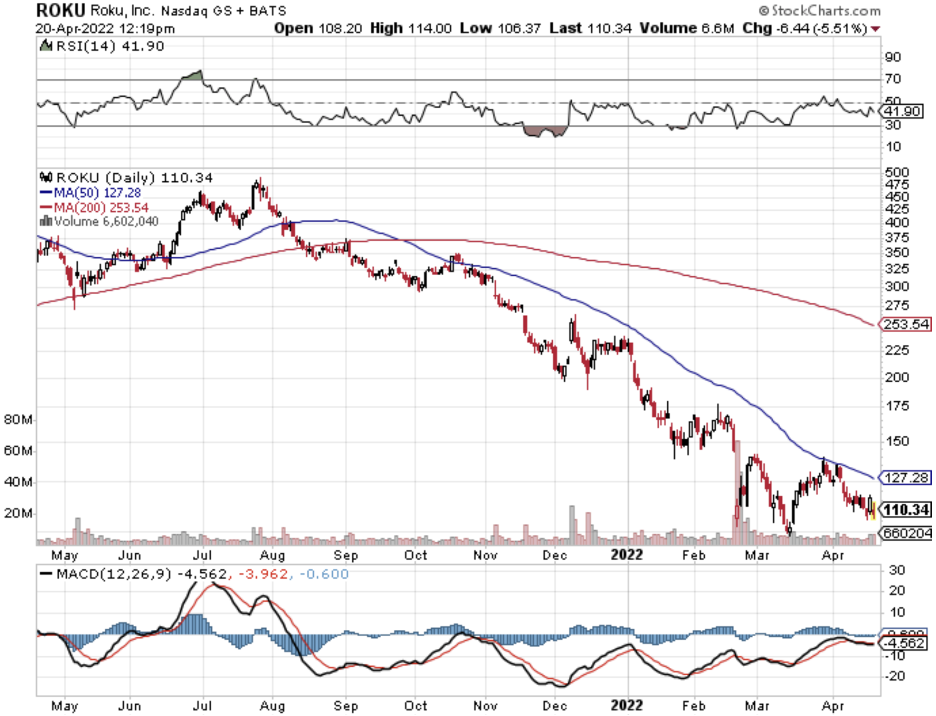
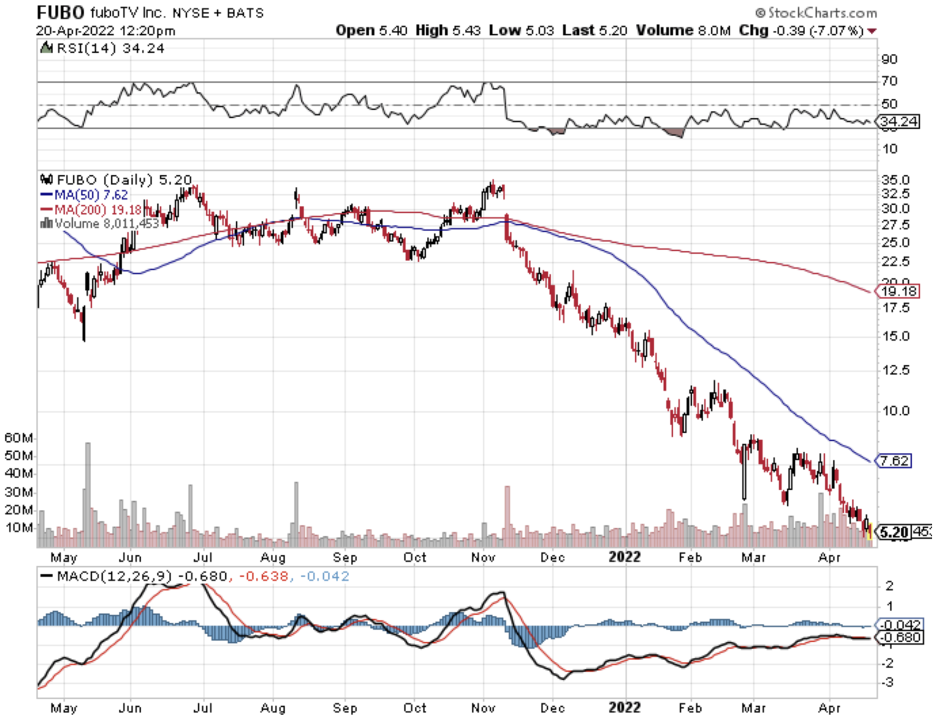
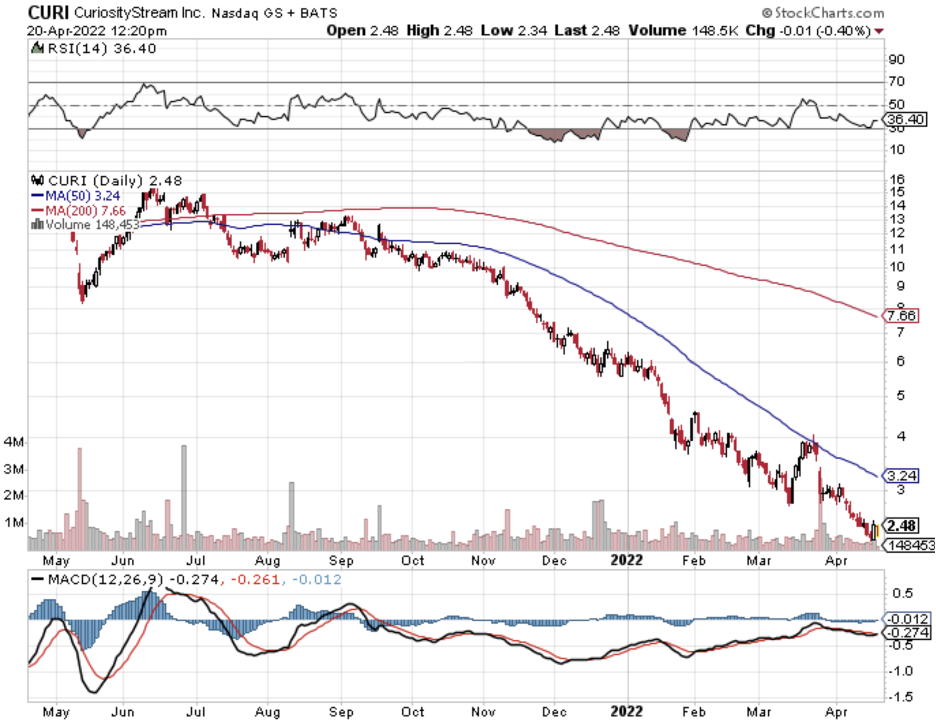
Legal Disclaimer
There is a very high degree of risk involved in trading. Past results are not indicative of future returns. MadHedgeFundTrader.com and all individuals affiliated with this site assume no responsibilities for your trading and investment results. The indicators, strategies, columns, articles and all other features are for educational purposes only and should not be construed as investment advice. Information for futures trading observations are obtained from sources believed to be reliable, but we do not warrant its completeness or accuracy, or warrant any results from the use of the information. Your use of the trading observations is entirely at your own risk and it is your sole responsibility to evaluate the accuracy, completeness and usefulness of the information. You must assess the risk of any trade with your broker and make your own independent decisions regarding any securities mentioned herein. Affiliates of MadHedgeFundTrader.com may have a position or effect transactions in the securities described herein (or options thereon) and/or otherwise employ trading strategies that may be consistent or inconsistent with the provided strategies.
This site uses cookies. By continuing to browse the site, you are agreeing to our use of cookies.
OKLearn moreWe may request cookies to be set on your device. We use cookies to let us know when you visit our websites, how you interact with us, to enrich your user experience, and to customize your relationship with our website.
Click on the different category headings to find out more. You can also change some of your preferences. Note that blocking some types of cookies may impact your experience on our websites and the services we are able to offer.
These cookies are strictly necessary to provide you with services available through our website and to use some of its features.
Because these cookies are strictly necessary to deliver the website, refuseing them will have impact how our site functions. You always can block or delete cookies by changing your browser settings and force blocking all cookies on this website. But this will always prompt you to accept/refuse cookies when revisiting our site.
We fully respect if you want to refuse cookies but to avoid asking you again and again kindly allow us to store a cookie for that. You are free to opt out any time or opt in for other cookies to get a better experience. If you refuse cookies we will remove all set cookies in our domain.
We provide you with a list of stored cookies on your computer in our domain so you can check what we stored. Due to security reasons we are not able to show or modify cookies from other domains. You can check these in your browser security settings.
These cookies collect information that is used either in aggregate form to help us understand how our website is being used or how effective our marketing campaigns are, or to help us customize our website and application for you in order to enhance your experience.
If you do not want that we track your visist to our site you can disable tracking in your browser here:
We also use different external services like Google Webfonts, Google Maps, and external Video providers. Since these providers may collect personal data like your IP address we allow you to block them here. Please be aware that this might heavily reduce the functionality and appearance of our site. Changes will take effect once you reload the page.
Google Webfont Settings:
Google Map Settings:
Vimeo and Youtube video embeds:
